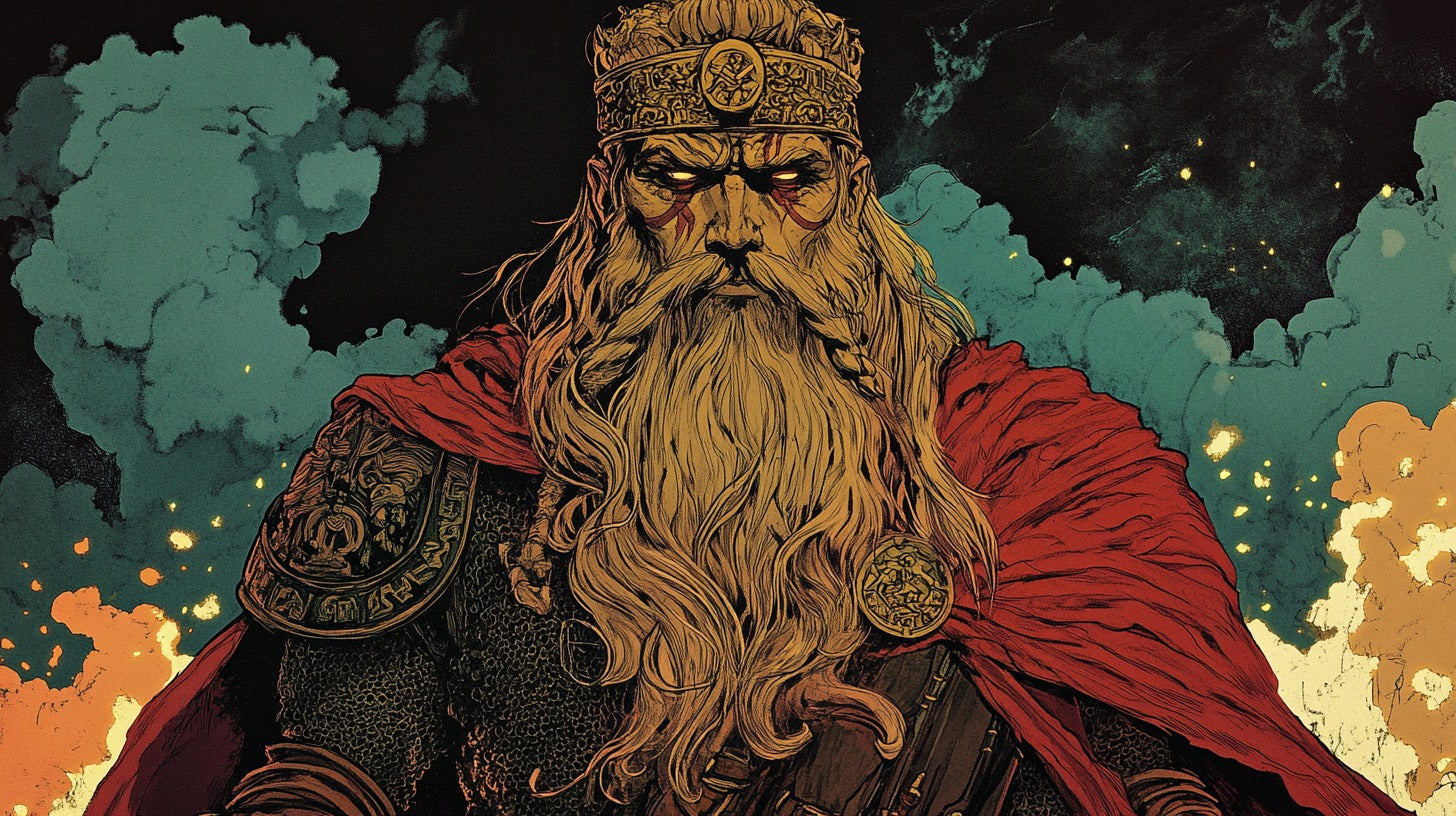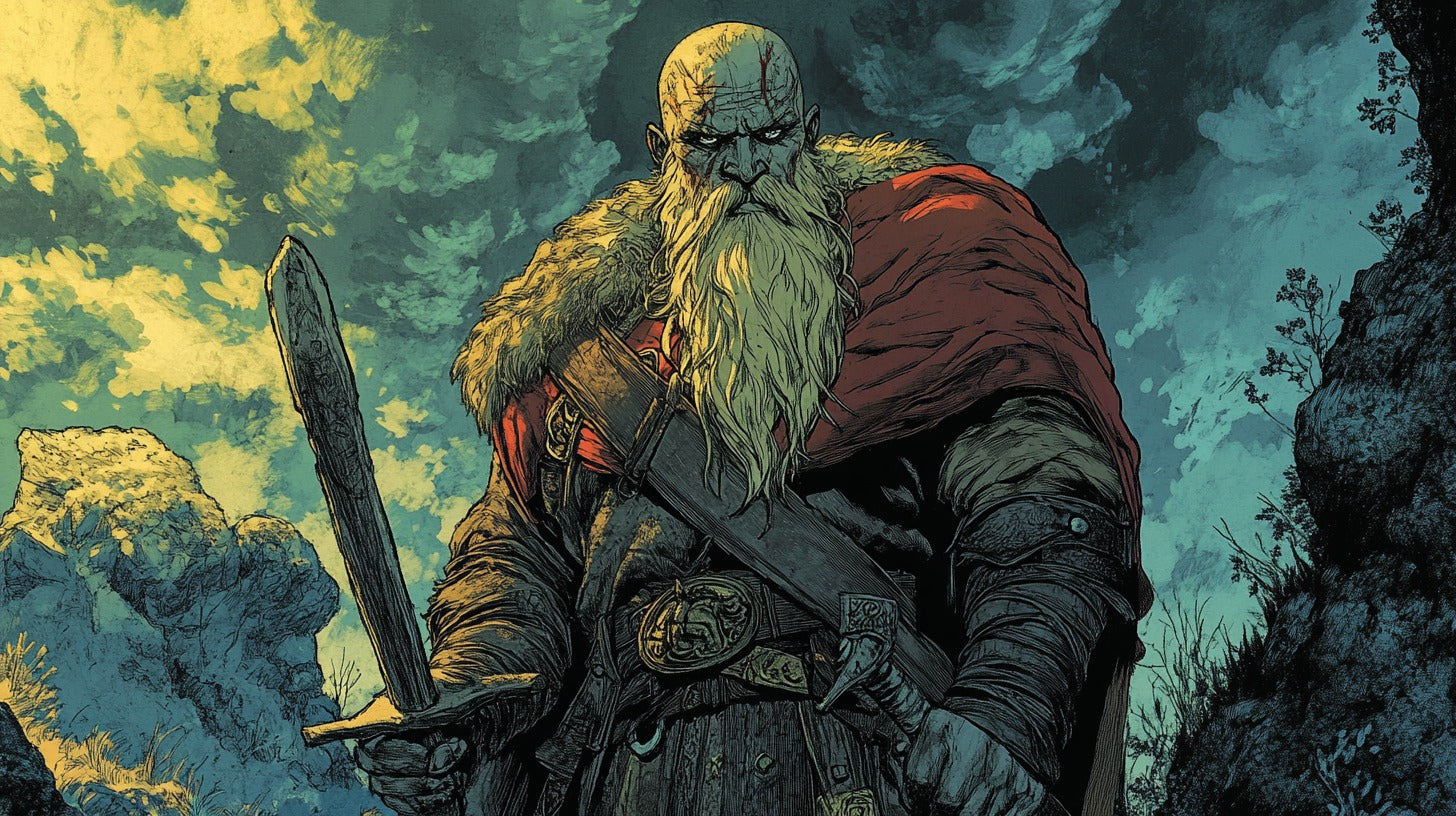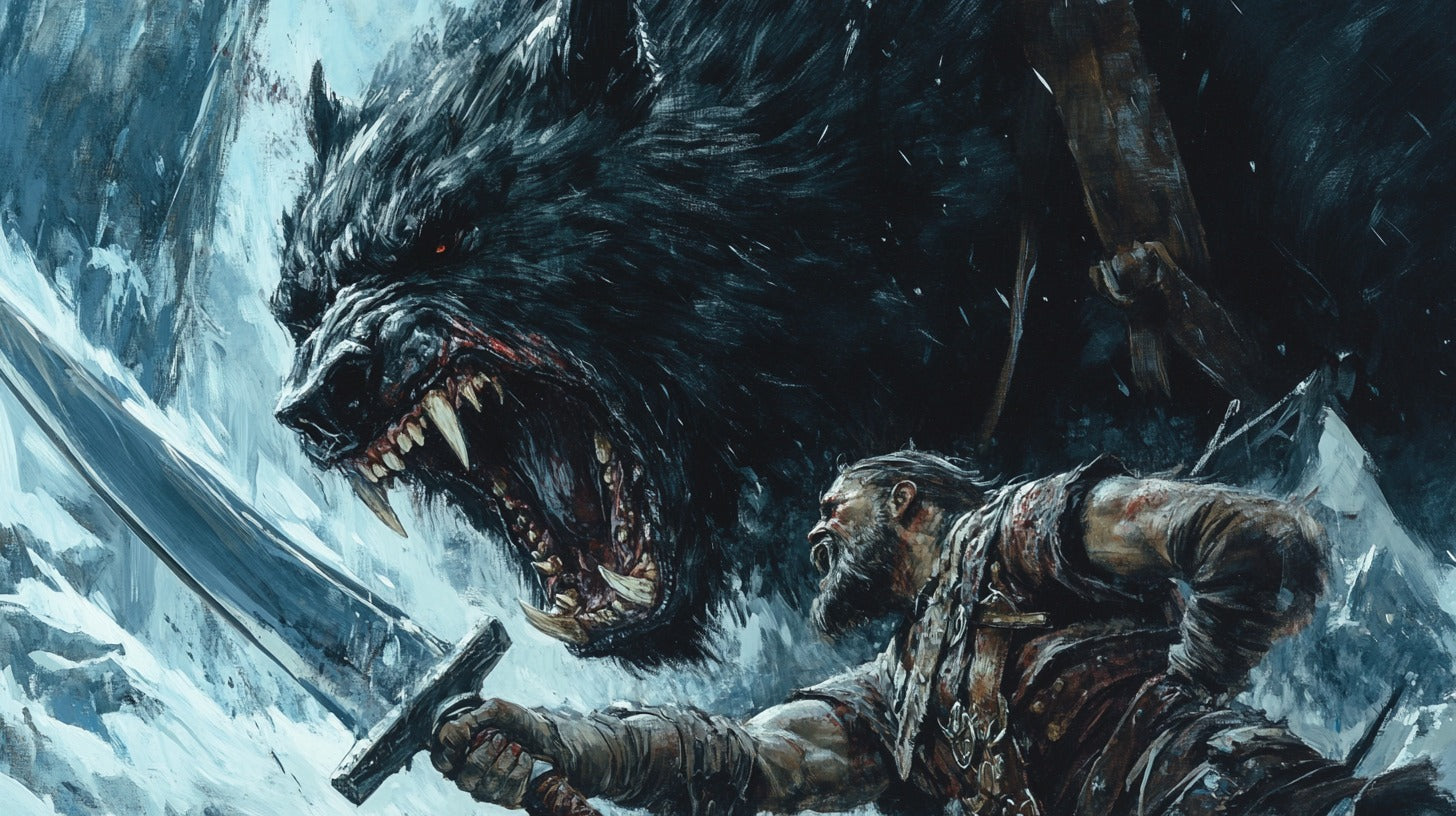
Forseti: Norse God of Justice and Reconciliation
Forseti, the Norse god of justice and reconciliation, appears prominently in several medieval Scandinavian texts, though mentions of him are relatively sparse compared to other Norse deities. The primary sources for our knowledge of Forseti come from the 13th-century Prose Edda, written by Snorri Sturluson, and the Poetic Edda, a collection of older mythological poems. In Grimnismál, one of the poems in the Poetic Edda, Forseti is described as dwelling in his hall Glitnir, where he "settles all disputes."
Archaeological Evidence
Archaeological evidence for the worship of Forseti is limited but significant. The most notable archaeological connection comes from Helgoland, an island in the North Sea, which was known in Old Norse as Fositesland (Forseti's Land). According to historical records from the 8th century CE, particularly those concerning Saint Willibrord's mission to Frisia, the island was considered sacred to a deity called Fosite, who scholars generally identify as being identical with Forseti.
Relationship to Baldr and Nanna
According to the Prose Edda, Forseti is the son of Baldr and Nanna. Baldr, known for his beauty, wisdom, and tragic death, was himself a son of Odin and Frigg. This divine parentage places Forseti in a significant position within the Norse pantheon, though his role appears to be more specialized and focused on justice than his father's broader divine portfolio.
Attributes and Domains

Forseti Seated in Judgment (1881) by Carl Emil Doepler (Public Domain)
Role as Justice-Keeper
Forseti's primary function in Norse mythology was as an administrator of justice and resolver of disputes. Historical sources consistently emphasize his role as a mediator and judge, with Snorri Sturluson describing him as one who "stills all strife." Unlike other Norse gods associated with law and justice, such as Tyr, Forseti's domain specifically focused on mediation and peaceful resolution rather than the enforcement of oaths or martial aspects of law.
Glitnir: The Shining Hall
The most detailed description of Forseti's realm comes from accounts of his hall, Glitnir. Described as having a roof of silver and pillars of gold, this celestial courthouse served as a place where disputes were settled and reconciliations achieved. The name Glitnir itself means "shining" or "glittering," reflecting both the physical appearance of the hall and the illuminating nature of justice.
Cultural Significance

Hrafnheimr - Viking Raven Oath Ring
Worship and Religious Practices
Evidence suggests that Forseti was particularly venerated in Frisia and regions along the North Sea coast. The worship of Forseti appears to have been closely tied to legal proceedings and the administration of justice. Historical records indicate that his sacred sites, particularly on Helgoland, were considered inviolable places where important legal matters were settled.
Geographic Distribution of Cult
The geographic spread of Forseti worship appears to have been concentrated in coastal regions of northern Europe, particularly in Frisia and parts of Scandinavia. Archaeological evidence and place names suggest that his cult may have had particular significance in areas where different cultural groups met and needed mechanisms for dispute resolution.
Legacy and Modern Interpretations

Bird's eye view, Heligoland, c. 1890–1900 (Unknown author, Public Domain)
Historical Impact
Forseti's influence on medieval Scandinavian legal practices is evident in the continuing tradition of mediation and reconciliation in Nordic legal systems. The concept of peaceful dispute resolution, central to Forseti's character, remained an important aspect of Scandinavian legal culture well into the Christian era.
Contemporary References
In modern times, Forseti has become a symbol of justice and fair mediation in various contexts. His name and attributes have been incorporated into modern legal and governmental institutions in Scandinavian countries, reflecting the enduring influence of Norse mythological concepts on contemporary Nordic culture.
Frequently Asked Questions (FAQs)
- Was Forseti worshipped throughout all of Scandinavia?
No, evidence suggests his worship was primarily concentrated in coastal regions, especially Frisia and northern Germanic areas.
- How does Forseti differ from other Norse gods associated with justice?
While gods like Tyr focused on oaths and martial aspects of law, Forseti specialized in mediation and peaceful dispute resolution.
- What is the significance of Glitnir's golden pillars and silver roof?
These precious materials symbolized both the importance of justice and the illuminating nature of truth and reconciliation.
- Is there a connection between Forseti and the Frisian god Fosite?
Most scholars agree they are the same deity, with Fosite being the Frisian variation of the name.
- Why are there relatively few mentions of Forseti in Norse mythology?
While Forseti was important, his specialized role in justice and dispute resolution meant he appeared less frequently in the dramatic narratives that dominate Norse mythology.
References
Sturluson, Snorri. "Prose Edda." Translated by Anthony Faulkes, University of Birmingham, 1987.
Larrington, Carolyne. "The Poetic Edda." Oxford University Press, 2014.
Simek, Rudolf. "Dictionary of Northern Mythology." D.S. Brewer, 1993.
Turville-Petre, E.O.G. "Myth and Religion of the North: The Religion of Ancient Scandinavia." Greenwood Press, 1975.
Davidson, H.R. Ellis. "Gods and Myths of Northern Europe." Penguin Books, 1990.
Price, Neil. "The Viking Way: Religion and War in Late Iron Age Scandinavia." Oxford University Press, 2002.
Brink, Stefan. "Law and Society in Viking and Medieval Scandinavia." Brepols Publishers, 2013.
Näsström, Britt-Mari. "Norse Religious Practice." Cambridge University Press, 2018.
Sundqvist, Olof. "An Arena for Higher Powers: Ceremonial Buildings and Religious Strategies for Rulership in Late Iron Age Scandinavia." Brill, 2016.
DuBois, Thomas A. "Nordic Religions in the Viking Age." University of Pennsylvania Press, 1999.








